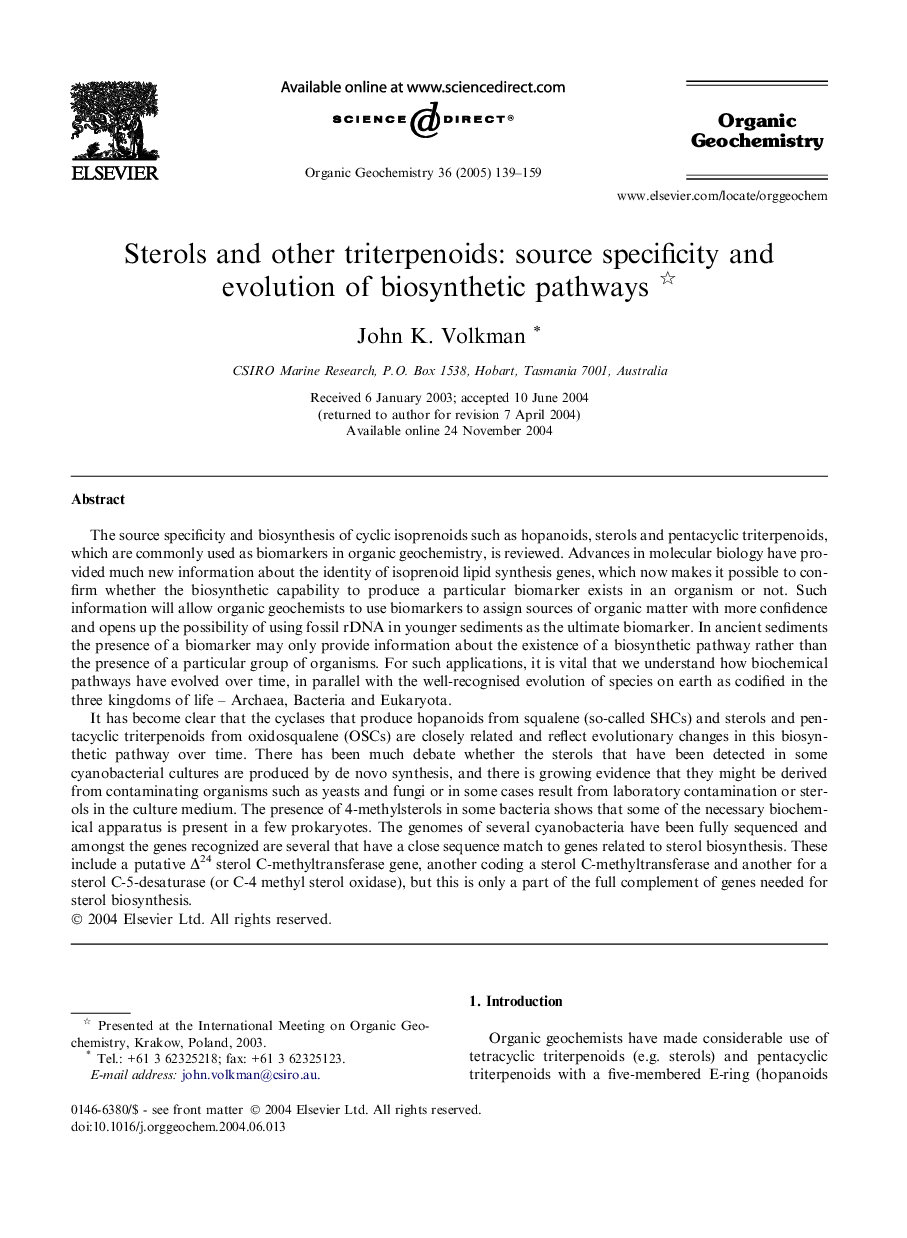| کد مقاله | کد نشریه | سال انتشار | مقاله انگلیسی | نسخه تمام متن |
|---|---|---|---|---|
| 9556338 | 1379681 | 2005 | 21 صفحه PDF | دانلود رایگان |
عنوان انگلیسی مقاله ISI
Sterols and other triterpenoids: source specificity and evolution of biosynthetic pathways
دانلود مقاله + سفارش ترجمه
دانلود مقاله ISI انگلیسی
رایگان برای ایرانیان
موضوعات مرتبط
مهندسی و علوم پایه
شیمی
شیمی آلی
پیش نمایش صفحه اول مقاله

چکیده انگلیسی
It has become clear that the cyclases that produce hopanoids from squalene (so-called SHCs) and sterols and pentacyclic triterpenoids from oxidosqualene (OSCs) are closely related and reflect evolutionary changes in this biosynthetic pathway over time. There has been much debate whether the sterols that have been detected in some cyanobacterial cultures are produced by de novo synthesis, and there is growing evidence that they might be derived from contaminating organisms such as yeasts and fungi or in some cases result from laboratory contamination or sterols in the culture medium. The presence of 4-methylsterols in some bacteria shows that some of the necessary biochemical apparatus is present in a few prokaryotes. The genomes of several cyanobacteria have been fully sequenced and amongst the genes recognized are several that have a close sequence match to genes related to sterol biosynthesis. These include a putative Î24 sterol C-methyltransferase gene, another coding a sterol C-methyltransferase and another for a sterol C-5-desaturase (or C-4 methyl sterol oxidase), but this is only a part of the full complement of genes needed for sterol biosynthesis.
ناشر
Database: Elsevier - ScienceDirect (ساینس دایرکت)
Journal: Organic Geochemistry - Volume 36, Issue 2, February 2005, Pages 139-159
Journal: Organic Geochemistry - Volume 36, Issue 2, February 2005, Pages 139-159
نویسندگان
John K. Volkman,